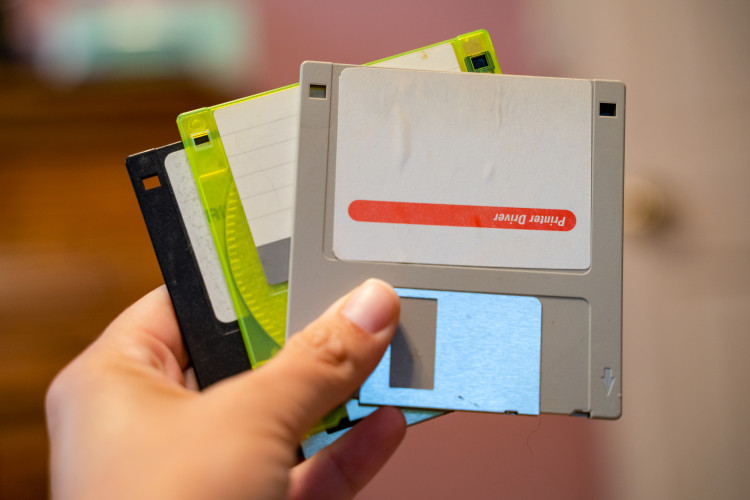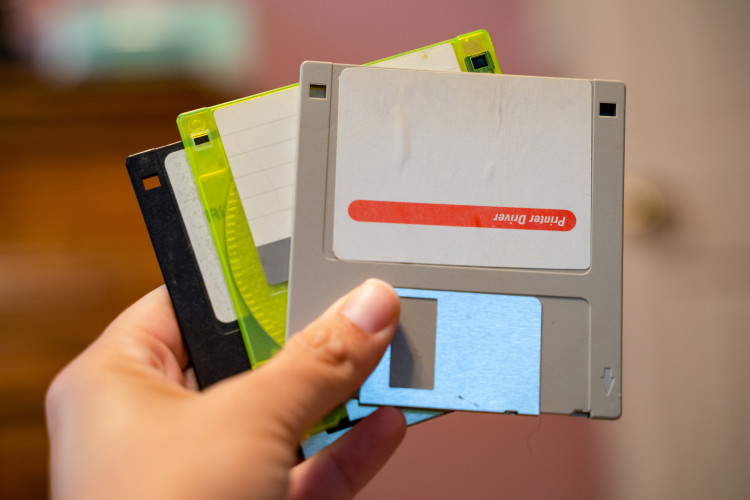From Chalkboards to Smartboards: How Modern Technology Has Shaped the Landscape of Education

If you were an elementary student in the 1990s, technology in the classroom meant playing “educational” games like Word Munchers, Math Blaster!, or Oregon Trail in the school’s computer lab. When it came time to research a state capitol or the duck-billed platypus, you may remember being taught how to search card catalogs for library books or paging through encyclopedias. The idea that technology would become a principal educational tool was just starting to come to fruition with the invention and widespread adoption of the internet.

Technology has changed how students learn, making education accessible in ways we never imagined. Students conduct research from their laptops, enroll in online courses, and livestream lectures from anywhere with a Wi-Fi connection. Even something as simple as taking notes has shifted from pen and paper to digital devices.
But while technology can offer greater access and convenience, social and economic factors can severely limit access to technology for all students, making things like high-speed broadband, personal computers, and tablets inaccessible even in this modern day. Additionally, not all K-12 school districts or colleges have extensive technology budgets. Despite these barriers, technical advancements continue to reshape how students learn. They also offer meaningful opportunities to students wanting to advance their education and perhaps go back to school as an adult learner. Let’s look back at the history of some notable technology advances and how they have influenced the way students learn.
The Advent of the Word Processor
Before Google Docs, Microsoft Word, and Open Office, students tapped out their essays on typewriters. When they made a mistake, they painted a stroke of Wite-Out over it. If they found errors in the middle of a paragraph, that sometimes meant retyping the entire page. Typewriters were not friendly to students trying to meet deadlines.
With the advent of the word processor — which became commonplace in school settings during the 1990s — came an array of features that made writing and editing papers a lot easier. “Cut and paste” made moving paragraphs a snap; “search and replace” meant that changing “da Vinchi” to “da Vinci” on every page of a term paper happened with a click. Word processing also gave students the option of instantly adjusting a document to change spacing, margins, and font. And students could save their work documents on a floppy disk for easy access.
The TI Graphing Calculator
Early calculators were limited to the basics: subtraction, addition, multiplication, and division. But in the ’80s, companies came out with the first graphing calculators, which plotted graphs, worked with variables, and solved simultaneous equations. The popular TI-81 model — which was designed with students in mind — was released in 1990, and adoption of graphing calculators in schools skyrocketed over the following decade.
Teachers became big fans of graphing calculators because they helped students visually understand mathematical concepts. Seeing math expressions, formulas, and graphs on a screen, students could understand why procedures produced certain results and appreciate abstract mathematical equations. More recently, graphing calculator applications for desktop and mobile devices are modernizing the classroom even further.
Personal Computers and Research Databases on the World Wide Web
In the 1990s and into the 2000s, many students began enjoying the advantage of personal computers and the internet, trading dusty libraries for the vast realm of information on the web. In addition to online articles, Google books, and videos, students can find online databases featuring studies, statistics, and reports. (In the early days of the internet, teachers didn’t want students to use search engines for research; thankfully, it’s now the norm.)
Technology has also changed how students learn and communicate with teachers and classmates across the education landscape, from kindergarten to the university. Email makes it easier to get in touch with teachers outside of the classroom, and online message boards let students stay in touch between classes.
Of course, technology has hit snags along the way, and even today’s students face challenges. When students relied on a dial-up internet connection, bad weather, poor wiring, and phone line problems could all interfere with their productivity. While current broadband internet connections race along at faster speeds, Wi-Fi can still be spotty, and not all students can afford the steep monthly fees.
Podcasts and Video Stream Lectures
Since they came into use in the 2000s, podcast and video stream lectures have become excellent educational tools that make life more convenient for both teachers and students. When students miss a lecture, they can download or stream it on their own time. College students with children may find video lectures and podcasts particularly helpful; as they juggle responsibilities or care for a sick child at home, they can still access classroom instruction.
Even when students do attend class, they still might want to access a lecture later to study for a final. Now, they can even prep for an exam while driving to work or washing the dishes. And when professors get sick, they can upload a lecture to keep their students from falling behind.
Classroom Presentations and Online Learning
Thinking back to your childhood classroom may remind you of blackboards and the smell of chalk (or whiteboards and the smell of markers), with teachers mapping out math problems step by step. Maybe your teachers used overhead projectors for graphs or played scratchy filmstrips. Today’s technology has brought digital screens to the classroom, allowing teachers to deliver PowerPoint presentations, videos, and audio clips.
This progression has led to fully online learning environments. Teachers at K-12 through college levels can deliver instruction remotely, set up virtual discussion groups, and provide feedback on uploaded student work, often through learning management platforms such as Canvas and Google Classroom or video conferencing tools such as Zoom. During online instruction, teachers can share their screens to show examples to students, and students can share their screens with teachers when they get stuck. This setting is ideal for courses such as math, as teachers can use digital tools to demonstrate how to solve problems.
Technology has also expanded the ways students can present and share their work. In addition to screen sharing for immediate feedback, students can create video presentations and podcasts, which classmates and instructors watch and discuss at their own pace.
Discover What Technology in Education Can Mean to You
Technology is advancing at a dizzying pace, with more changes on the way. In the years to come, artificial intelligence, virtual reality, and chatbots using machine learning will personalize curricula for students and offer self-paced learning in ways never before possible.
While contemplating these exciting possibilities, don’t underestimate what modern technology has already brought to the classroom. Technology is reshaping the landscape of education in both K-12 and higher education settings. Offering greater levels of flexibility, personalization, and innovation, schools such as Maryville University are leading the charge in adopting a technology-first approach to modern learning.
Ready to take a daring leap back into the classroom? Consider Maryville’s various online bachelor’s, master’s, and doctoral degree programs and discover how we can help you reach your educational goals.
Recommended Readings:
How Technology is Changing Access to the College Experience
6 Steps to Creating an Effective Study Space
Resources for Organizing and Managing Your Busy Household
The Kids Become the Teachers: At-Home Tips for Students Who Are Also Parents
Sources:
Education Beyond Borders, “How the Internet Affected the Modern Educational Process”
Education Week, “Teachers Are Turning to Podcasts as an Instructional Tool”
Forbes, “How Technological Innovation in Education Is Taking On COVID-19”
Mashable, “Why the TI Graphing Calculator Ruled Your Classroom”
One Fine Play, “A Brief History of Podcasting”
Restream, “How Video Streaming Can Amplify Your Educational Event”
Teaching in a Digital Age, “A Short History of Educational Technology”
TechGenyz, “How Technology Has Changed Education — 21st Century Learning”
The Hustle, “Is the Era of the $100+ Graphing Calculator Coming to an End?”
Visual Capitalist, “How Technology Is Shaping the Future of Education”
Wabisabi Learning, “How Technology Has Changed Education and Will Keep Changing It”

